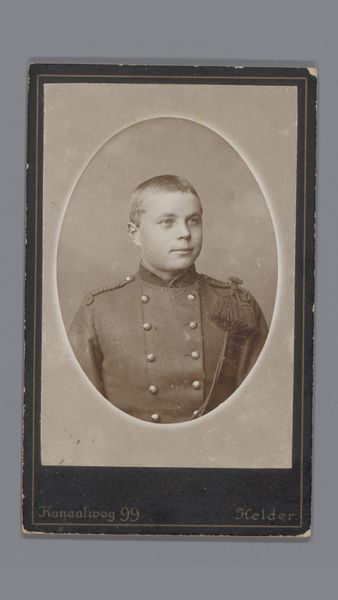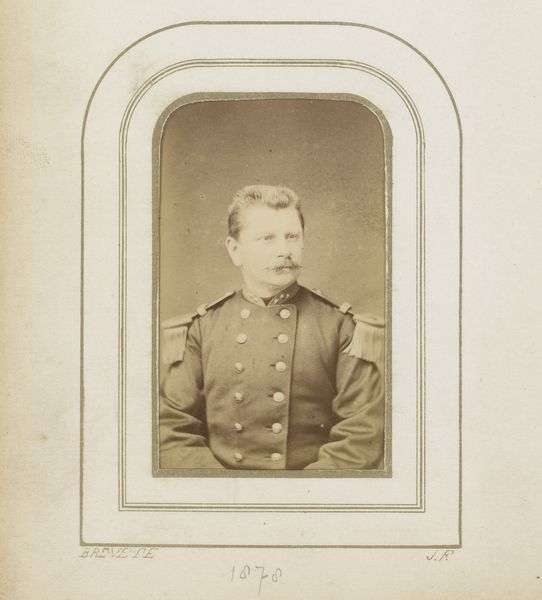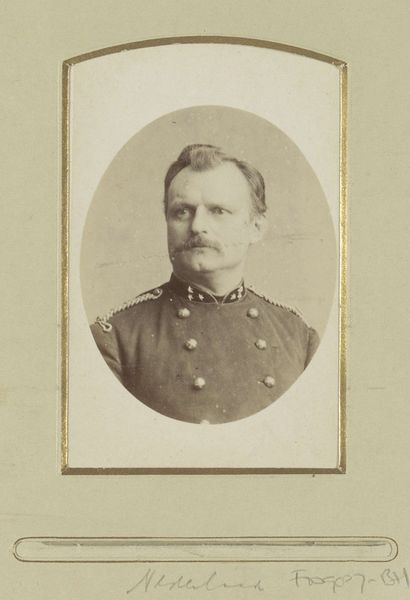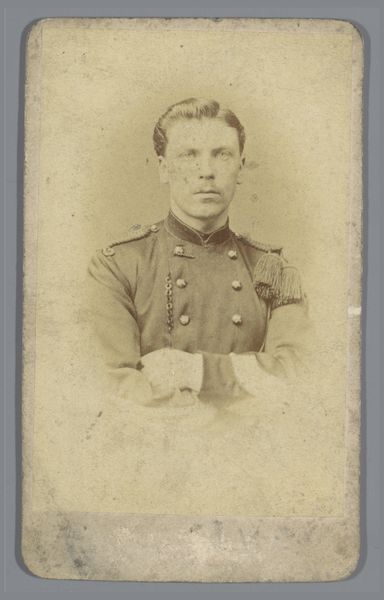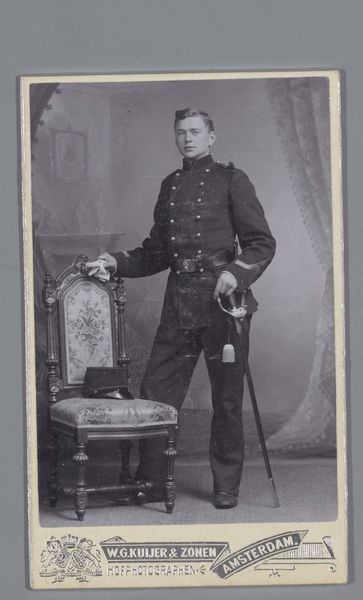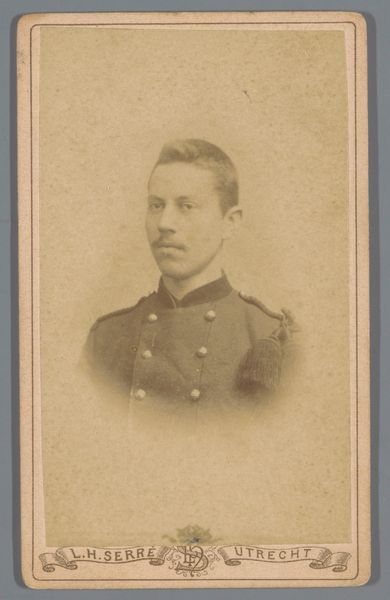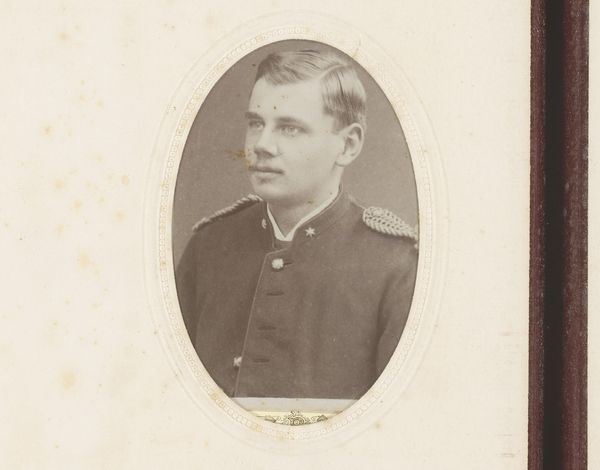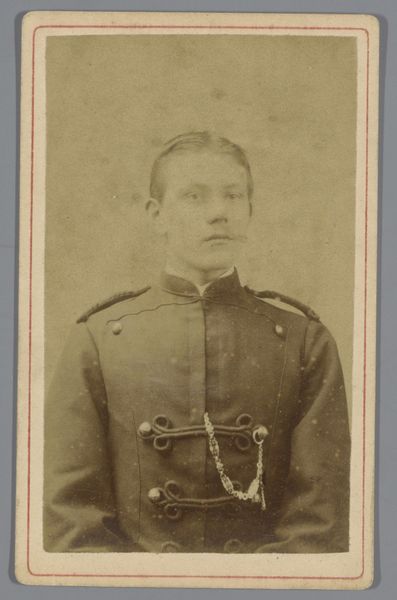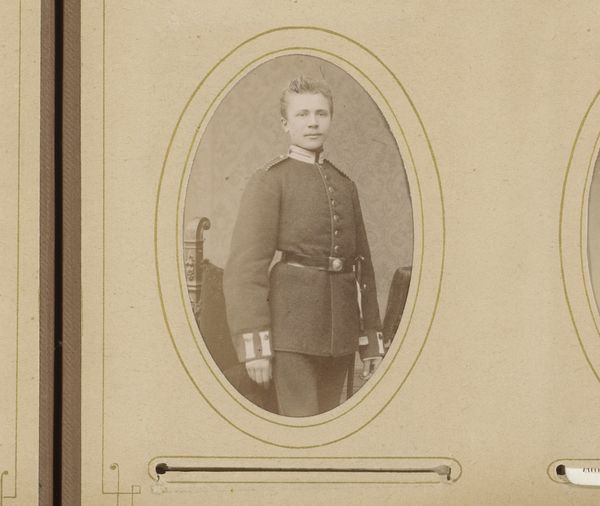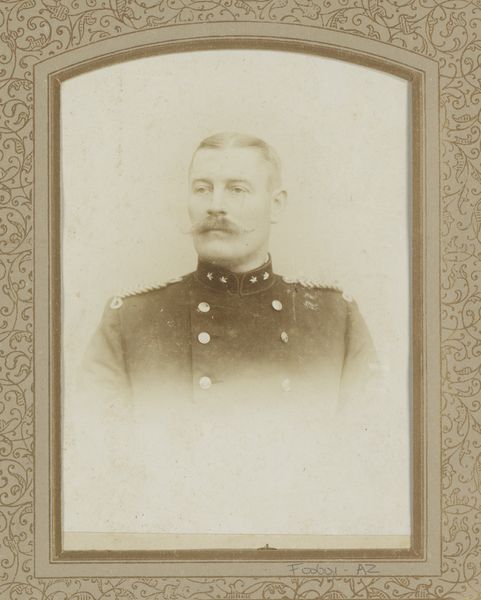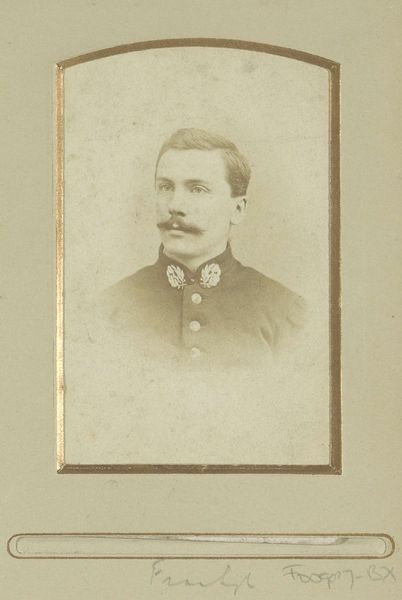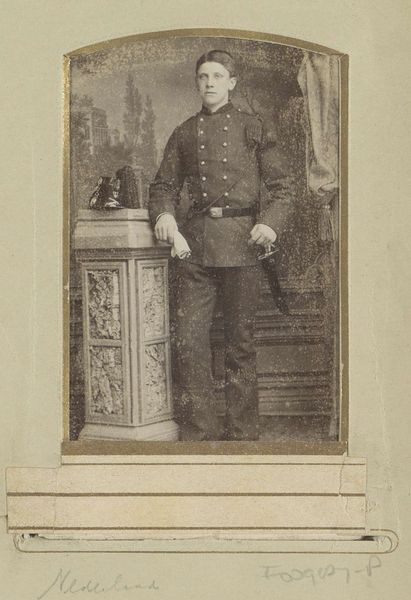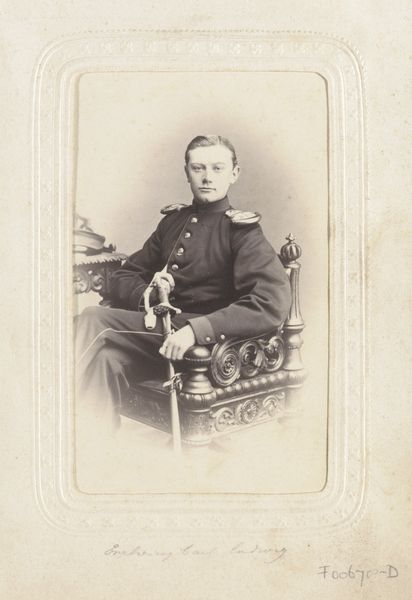
photography
#
portrait
#
photography
#
19th century
#
realism
Dimensions: height 100 mm, width 62 mm
Copyright: Rijks Museum: Open Domain
Editor: So, this photograph, "Portret van een (vermoedelijk) Nederlandse militair," or Portrait of a presumed Dutch Military Man, dates from around 1864 to 1879. It's an early photographic portrait. The uniform looks incredibly formal and almost stiff, but there is an intriguing softness in the light. What stands out to you? Curator: I'm drawn to the material processes evident here. We see a confluence of factors impacting production – from the availability of photographic materials at the time, dictating the tonal range and possible exposures, to the regimented labor required to produce the uniform itself. The very act of sitting for a photograph then was also laborious and costly for both the subject and the photographer. Consider how that affected pose and presentation. Editor: That's fascinating! I hadn't thought about the labour behind simply making a portrait at that time. Do you think that's part of the "realism" style of photography from this era? Curator: It’s partially about realism, yes. Photography, in its chemical and mechanical processes, captured the real perhaps *too* directly. Artists had to wrestle with it. It's also about social conditions: why a military uniform? Who made it? Was it mass produced, bespoke? This impacts not just the photograph, but the sitter's identity and role. Editor: So you're saying we can see the economy of the time reflected in this single image, from manufacturing to photographic practice? Curator: Precisely! It's about understanding the network of labor, materials, and consumption embedded in what we see. Each button, each shadow tells a story of production and purpose. Editor: This completely changed the way I viewed this portrait! I never thought about photographic technology as labor-intensive. Thank you. Curator: And I never would have considered my ideas about portraiture if it weren't for you asking simple, but keen, observations about form. It helps highlight overlooked context of both production and consumption of artistic mediums!
Comments
No comments
Be the first to comment and join the conversation on the ultimate creative platform.
